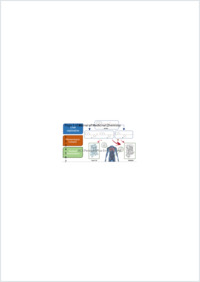Structural basis for developing multitarget compounds acting on Cysteinyl Leukotriene Receptor 1 and G-Protein coupled Bile Acid Receptor 1
- Fiorillo, Bianca Department of Pharmacy, University of Naples “Federico II”, Naples, Italy
- Sepe, Valentina Department of Pharmacy, University of Naples “Federico II”, Naples, Italy
- Conflitti, Paolo Euler Institute (EUL), Università della Svizzera italiana, Switzerland
- Roselli, Rosalinda Department of Pharmacy, University of Naples “Federico II”, Naples, Italy
- Biagioli, Michele Department of Medicine and Surgery, University of Perugia, Perugia, Italy
- Marchianò, Silvia Department of Medicine and Surgery, University of Perugia, Perugia, Italy
- De Luca, Pasquale Head – Sequencing and Molecular Analyses Center, RIMAR Stazione Zoologica, Naples, Italy
- Baronissi, Giuliana Department of Pharmacy, University of Naples “Federico II”, Naples, Italy
- Rapacciuolo, Pasquale Department of Pharmacy, University of Naples “Federico II”, Naples, Italy
- Cassiano, Chiara Department of Pharmacy, University of Naples “Federico II”, Naples, Italy
- Catalanotti, Bruno Department of Pharmacy, University of Naples “Federico II”, Naples, Italy
- Zampella, Angela Department of Pharmacy, University of Naples “Federico II”, Naples, Italy
- Limongelli, Vittorio Department of Pharmacy, University of Naples “Federico II”, Naples, Italy ; Euler Institute (EUL), Università della Svizzera italiana, Switzerland
- Fiorucci, Stefano Department of Medicine and Surgery, University of Perugia, Perugia, Italy
- 2021
Published in:
- Journal of Medicinal Chemistry. - 2021, vol. 64, no. 22, p. 16512-16529
English
G-protein-coupled receptors (GPCRs) are the molecular target of 40% of marketed drugs and the most investigated structures to develop novel therapeutics. Different members of the GPCRs superfamily can modulate the same cellular process acting on diverse pathways, thus representing an attractive opportunity to achieve multitarget drugs with synergic pharmacological effects. Here, we present a series of compounds with dual activity toward cysteinyl leukotriene receptor 1 (CysLT1R) and G-protein-coupled bile acid receptor 1 (GPBAR1). They are derivatives of REV5901─the first reported dual compound─with therapeutic potential in the treatment of colitis and other inflammatory processes. We report the binding mode of the most active compounds in the two GPCRs, revealing unprecedented structural basis for future drug design studies, including the presence of a polar group opportunely spaced from an aromatic ring in the ligand to interact with Arg792.60 of CysLT1R and achieve dual activity.
- Collections
- Language
-
- English
- Classification
- Medicine
- License
-
Rights reserved
- Open access status
- green
- Identifiers
-
- DOI 10.1021/acs.jmedchem.1c01078
- ARK ark:/12658/srd1328336
- Persistent URL
- https://n2t.net/ark:/12658/srd1328336
Statistics
Document views: 66
File downloads:
- Conflitti_2021_jmedchem: 171
